Drums are notoriously hard to create, and there is no definite guide… And this page isn’t one, sorry :). However, we will see through various examples how to build decent ones.
First advice
One thing that is important to remember is: one drum may sound good for one song, but not for another one. For this reason, I would always advise, like for all sounds, to create your drums from scratch for every new song. Even if you have a “formula” that works for you, apply it, but from scratch. By not copy/pasting/loading, you will introduce small variations, maybe errors, and the song will benefit from it.
It is the mix of all your sounds that make your song stand out. One benefit of AT is the possibility to play a pattern while editing your sounds. So don’t hesitate to play one of them, all the better if it includes even basic arrangements, like a bass, basic drums, chords and melody. Then enter the Instrument Editor and start tweaking the drums in real-time.
The funny thing is that, the sounds of songs you love often sound thin, even crap, when listened to alone, as we’ll see in the next examples. Hence the need to listen to them along your arrangements!
The basics
Drums are generally made of two things: noise and/or square envelope, with a decreasing pitch (I personally have never heard hardware envelope successfully used in a drum, but I’m sure there are some out there!).
A lot of old-old-school drums were simply composed of noise :
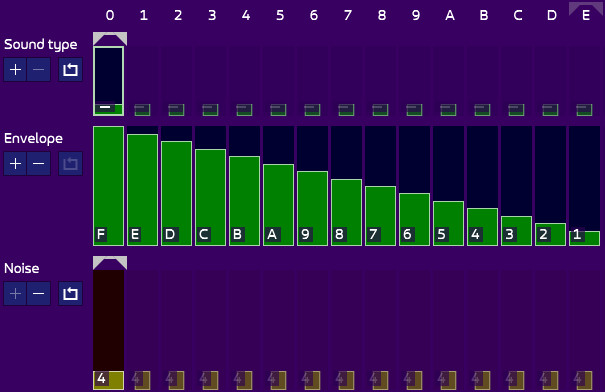
Simple for a snare, but probably too simple. So let’s add a square wave, with a decreasing pitch. I also made the noise period evolve for good measure. It’s all about experimenting!
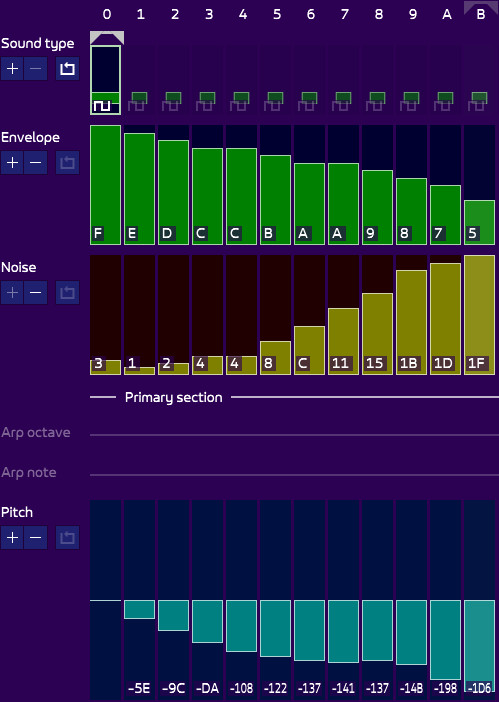
Much better, isn’t it?
Notice the and/or I mentioned before. The trick to most “evolved” drums is to alternate the square wave being present, probably without noise, and no square wave but with noise, the latter being used at the beginning to produce an attack. Examples below!
Real-world examples
It’s time to use the world’s best trick to rip sounds from music: the Streamed music analyzer (SMA)! It’s a tool from AT to play and extract sounds from music exported into the YM or VGM formats. It’s all explained here, so I won’t do it here again, but know that the examples below were created using this tool.
The following examples, used in many great songs, show many interesting things:
- They don’t sound as good as in the song itself!
- They all use more or less the same pattern.
- They are a trademark of their author.
Note: all these examples are in the package, in the Instrument folder.
Count Zero snare
Let’s begin with the snare of Count Zero:
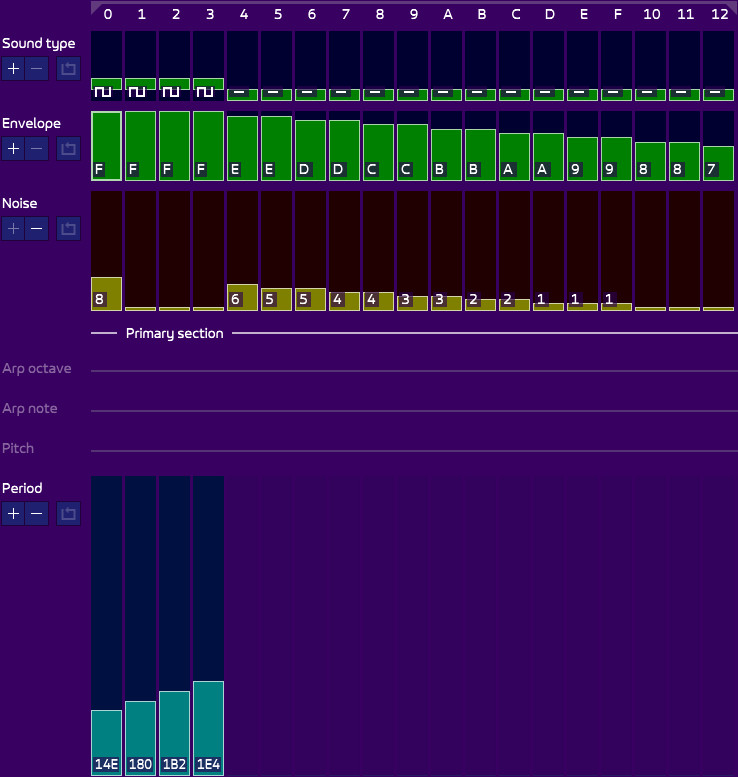
It is interesting because it starts with the software period without noise, except the first frame where noise is present for the “attack”, and ends with noise only. It is pretty original and sounds powerful on its own!
Tim Follin snare
The snare dum used by Tim Follin in Led Storm goes against what I said, as it is only a noise a descending square envelope:
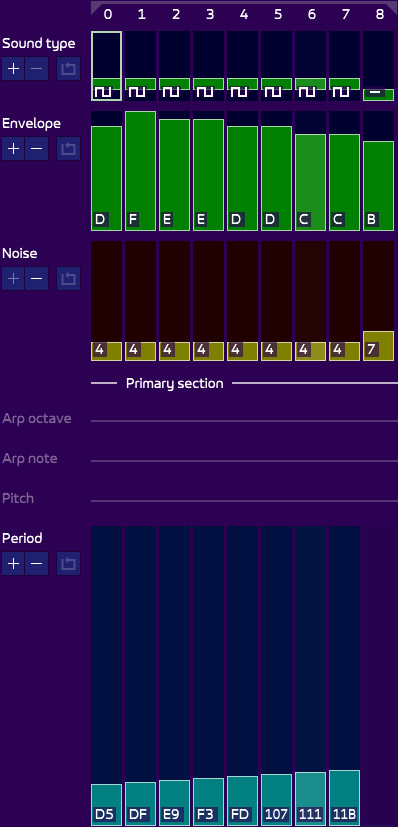
Funny to notice that the first frame has not a full volume, set only on the second. Yet it works great, especially in these awesome tunes.
Bassdrums
Let’s now examine some bass drums. A lot of them consists in an attack with noise, then a descending pitch. Here are three of them from famous composers. Can you guess who’s who?
Answer: Big Alec, Lap, Madmax! The one from Lap looks like this:
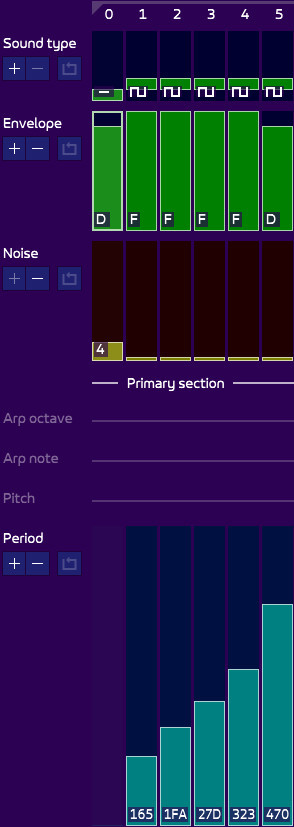
The other two use the same formula. All three have a lower volume on the first frame! Is it a trademark for Atari ST musicians??
David Whittaker snares
The mighty David Whittaker rarely (…never?) uses bass drums, but has two snares played alternately, which is his trademark:
The first one is raw noise with a treble in the volume:
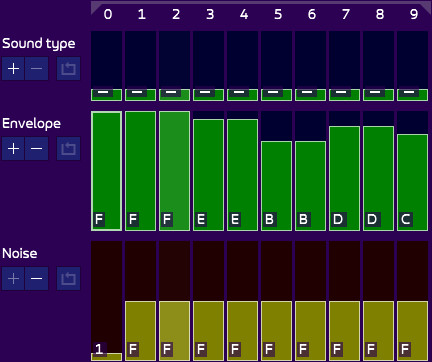
The second adds a descending pitch with a higher-pitched noise:
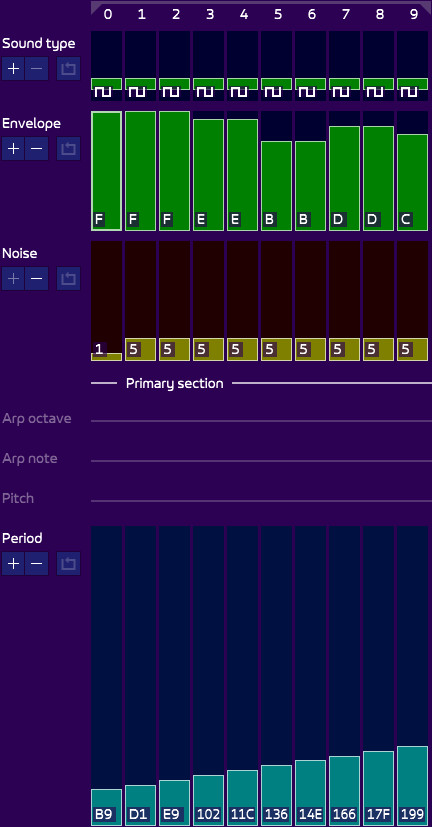
Chris Mad snare
Special mention to Chris Mad for his very original snare drum:
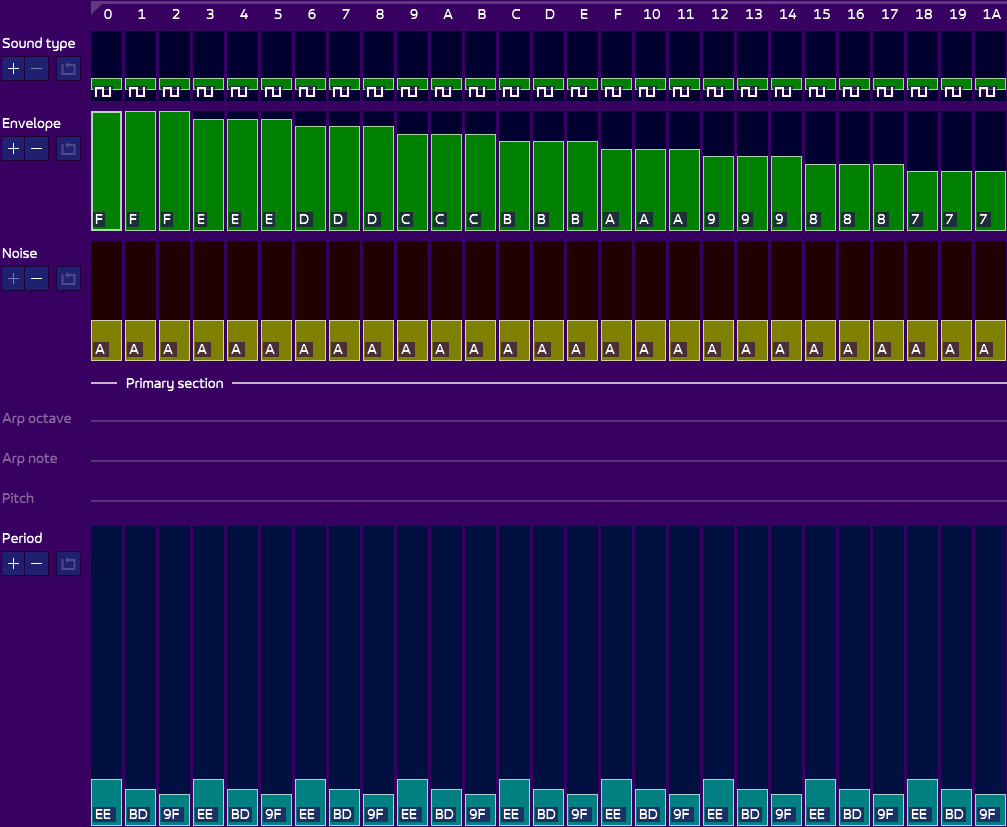
It is actually an arpeggio along with raw noise. Which allows to be both a percussive and melodic element of the song! To expand this concept, one would not force the period, and simply add an arpeggio, either in the instrument or, for more versatility, in the track itself.
Hi-hats
Hi-hats can be done very simply with a single frame of noise, without square envelope most of the time:
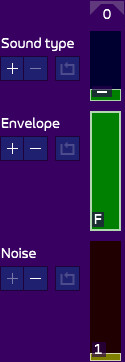
You can create an open hi-hat by using a decreasing volume envelope:
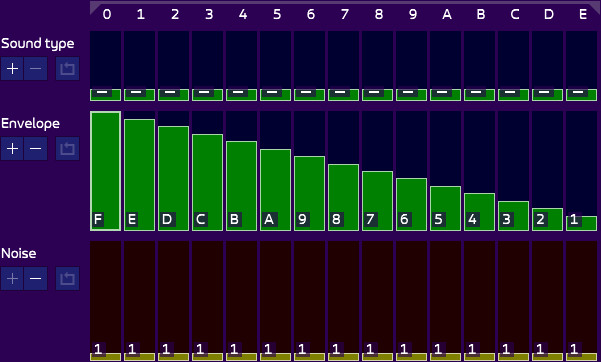
Used together, it could sound like this:
A nice trick is to create a looping sound timed to twice your tempo to simulate a double hi-hats, without having to change the tempo of your song:
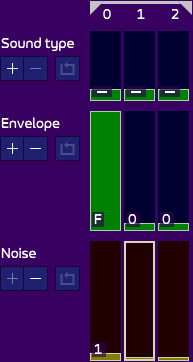
Note the sound loops on three frames, so our speed must be a multiple of that, else it probably won’t sound right. It sounds like this when used in a song (with a speed of 6):
Another trick is to add a single frame of noise into an instrument, like a bass or a chord, adding a percussive element to it:
Toms
Toms are usually a simple sliding-down pitch, without noise. This time, don’t hard-code the period: use a pitch so that you can have several toms with just one instrument:
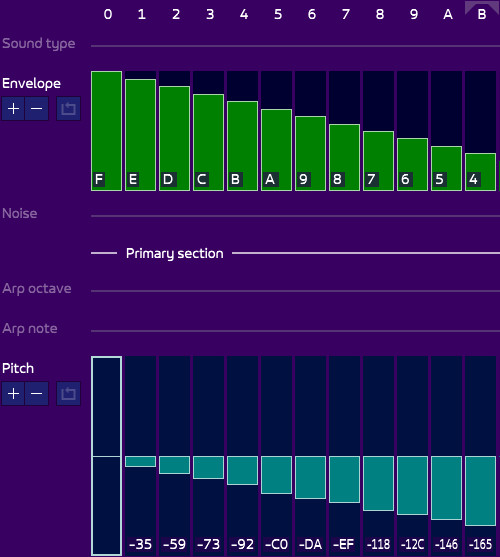
…. which, used in a track, could be used like this:
Wrapping up
As we have seen, there are ways to create generic and efficient drums, but drums are actually very personal instruments, and one can recognize the author by simply listening to them! All the more important to create your own style, but that goes only by experimenting. But don’t be afraid to study the sound of others to create your own!
